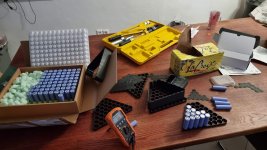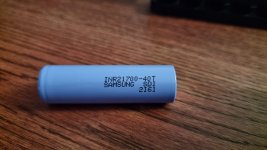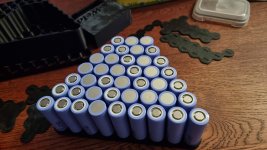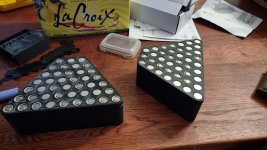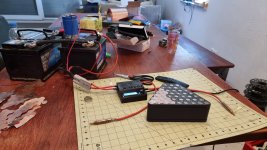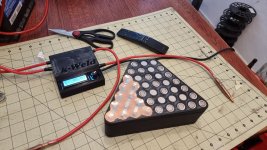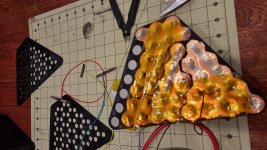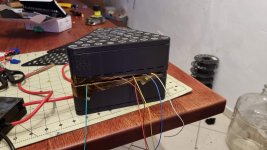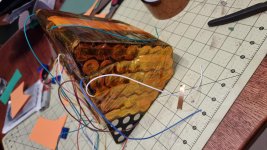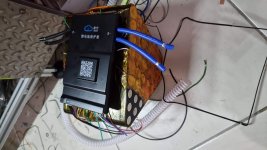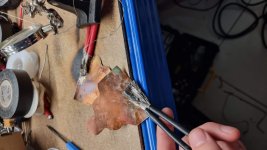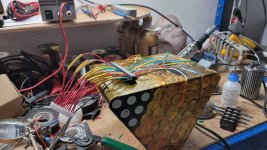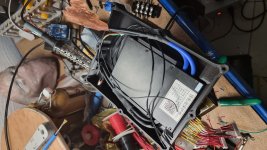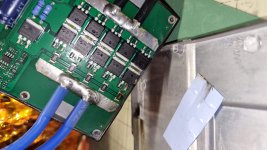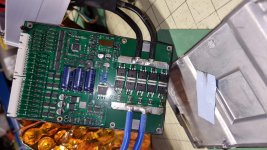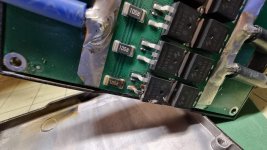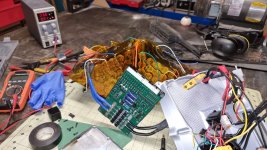cjorgensenmd said:
A few months ago I built a 14s6p battery pack from Samsung INR21700-40T cells.
I recently took the top case off in order to install a new top with a VESC and 48v->12v converter. Everything was going great until I connected a voltage display. It should not have shown anything with the battery turned off, but instead it showed 26v.
I turned the battery on and connected the horrible JK BMS App. It showed most cells at or below 2v with one cell grouping not registering at all.
I am currently trying to resurrect my battery by removing the BMS and top balance charging each parallel group individually. My theory is the BMS did not actually turn off the output when I switched it off. It similarly failed to switch off the output when it got to the low voltage threshold. Has anyone else faced a similar issue with this BMS? It was fairly expensive and highly rated, so I did not expect to face this kind of an issue.
Also, any tips on resurrecting the battery? Right now I am just slowly charging each parallel group.
cjorgensenmd said:
So before changing the top on the battery, it had been sitting unused at about 54v. The smart BMS came with a small digital switch that is supposed to tell the battery to turn on or off. Either enabling or disabling the output.
My daughter had previously ridden on the battery several times without issue. I never disconnected the BMS, but I did need to unplug and re-plug the switch to fit in the new top case.
The bike was not ridden at all between replacing this top case. It was literally just left overnight, wired to the voltage converter and powered off VESC. I had presumed the battery also had its output disabled.
I cannot take a screenshot with the BMS disconnected currently, but my low voltage cutoff was set for a relatively modest 3v per cell.
I verified the readings were correct with my multimeter.
Thoughts based on the info provided so far, including notes that cover some possibilities not specified yet:
Most likely, if the DC-DC (48-12v converter) was left connected to the battery (overnight, etc), it drained the cells below empty (<2v).
If it was connected to the output (discharge, P-) connector of the BMS, then the BMS should have turned the output off and prevented that. If it was connected any other way, the BMS can't do this.
If the BMS didn't prevent that, but it was correctly connected, the BMS may be damaged (the FETs may have failed shorted, a common failure mode, leaving the BMS permanently "on").
If the switch to turn it on and off has a poor connection to the BMS itself, and is only a momentary switch, it may not be correctly switching the BMS--same for if the switch is momentary and isn't always making a good internal connection when pressed.
If it's a latching switch, and requires latching on to turn the BMS on, and has an obvious height difference when on vs off, should be easy to verify which way it's set at any moment. If it has the same height in either mode after releasing the switch, I recommend a different switch that you can visually tell if it is on or off to ensure this problem can't recur.
If the BMS has separate charge and discharge ports, but these were tied together, that bypasses the FETs both ways and defeats the ability to turn off the output or input.
Cells drained down below their spec sheet's minimum limit, such as yours at <2v, may be damaged and could fail at any time under any conditions.
Failures can include fire.
Even if they don't fail, they are unlikely to perform the way they were designed to; more voltage sag even under less load, lower capacity, greater heating during charge and discharge, etc.
It is safer to replace *all* of the cells in the pack with brand new cells than to attempt to recover these.
I recommend first testing the BMS to ensure it operates correctly first. With it disconnected completely from all the cells, you can safely use a multimeter set to Ohms or Diode test to measure from C- to B- and P- to B- and P- to C-, in both directions for each one (red and black meter leads first one way, then the other). Since it is not connected to the battery there is no power to turn anything on, so the FETs should read open circuit in the direction of normal current flow. So red lead on B- and black on P- should be open. Red on C- and black on B- should be open. Black and red swapped on diode test shoudl read a "normal" diode (usually 400-ish to 700-ish, depending on how your meter works). P- to C- should read open both ways, for BMS with separate charge/discharge ports. (common port BMS will read short circuit both ways).
